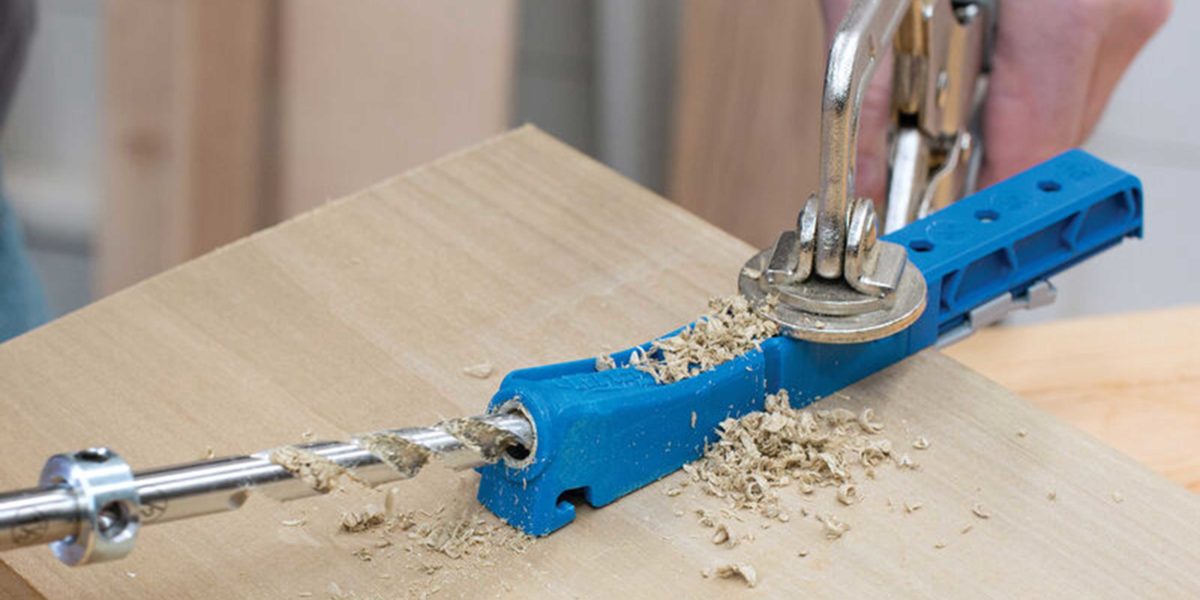
The Inexpensive Tool Pro Carpenters Swear By
Raise your DIY game by making your own cabinets—this tool makes it possible.

Courtesy of Kreg
There’s a lot to be said for measuring twice and cutting once. But the old carpentry adage about wisdom is only half the battle. Without the right tools, you might as well be stuck in the 1700s.
Sure, it’s possible to create nail-less masterpieces using Japanese joinery techniques, or to craft custom carpentry installs using just a saw and some three-penny nails. But here’s a major game-changer that will boost your results almost as soon as you bring it home.
Called the Kreg Jig, and ranging from a $15 mini kit up to massive industrial applications, the so-called “pocket hole” system allows you to bring two boards together at a 90 degree angle without any external fastening system.
The jig is pretty simple to figure out: You drill an angled hole in one board that points toward the end of the board. Insert the screw and it pops out said end, and into the board it’s joining—helping to pull the two pieces together from the inside.
You might recognize this method from IKEA cabinets, where you pass a specialized screw through to a receiving end that you turn clockwise to lock in place. That works, about as long as your particleboard stays in good shape.
